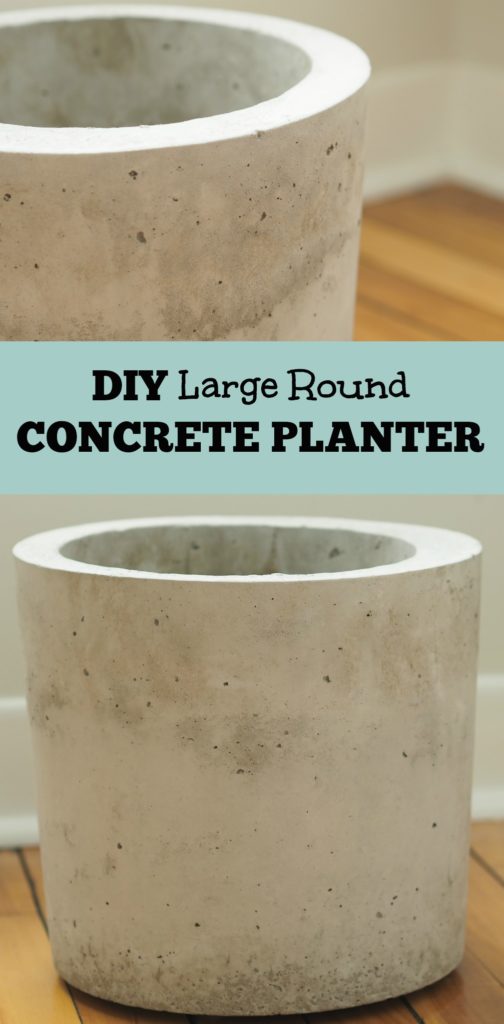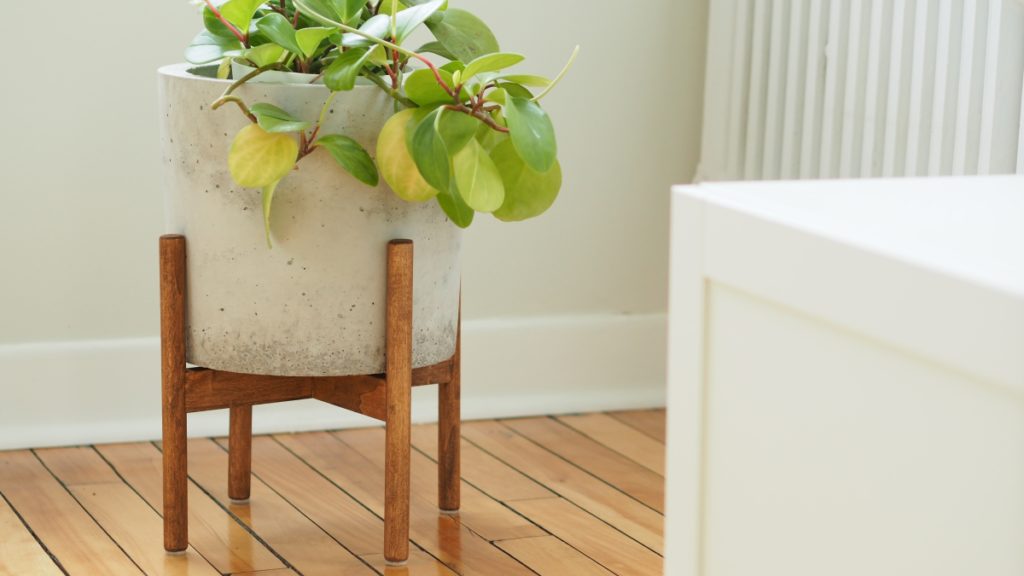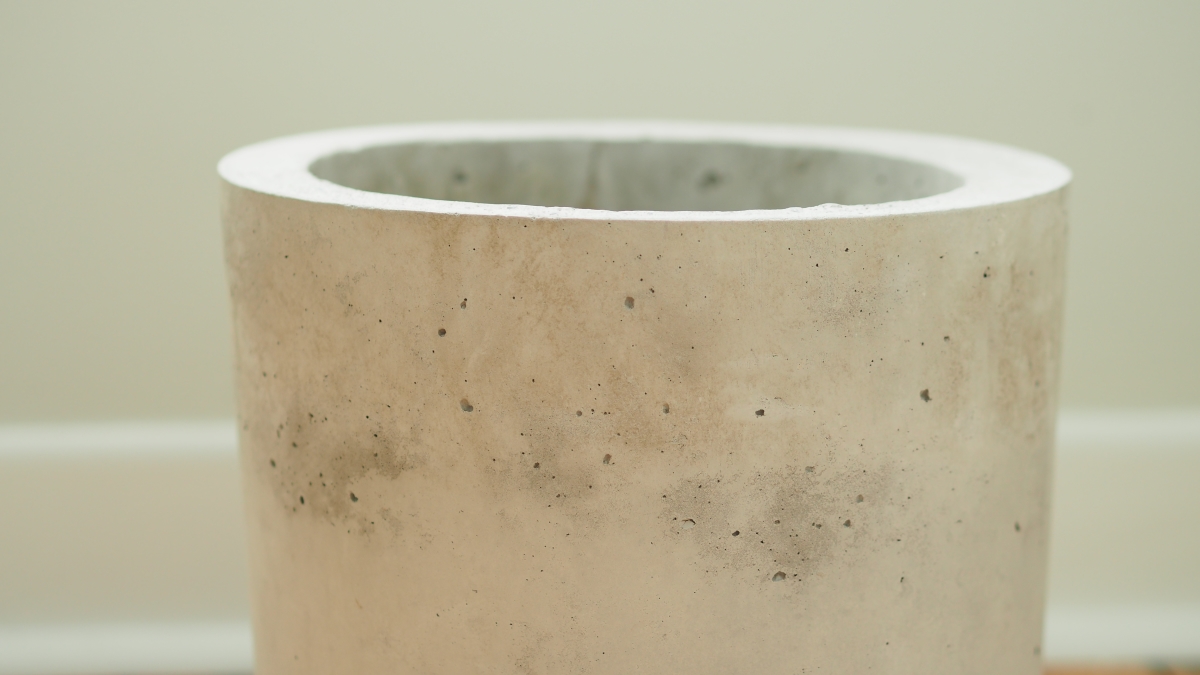
Full disclosure: This is my first time working with concrete.
That being said, I think my concrete planter turned out pretty great! I really wanted a large round concrete planter, and as usual, couldn’t find one for purchase that suited my needs. So I decided to make my own.
You can watch the step-by-step process in this video or read on for more details!
Click here to SUBSCRIBE to my YouTube channel for more DIY videos!
DIY Concrete Planter Materials
Start by gathering your tools and materials. For this project you’ll need:
- 5 gallon bucket
- 2 gallon bucket
- Concrete mix
- Water
- Concrete trowel
- Corner braces
- Canola oil spray
- Sheathing tape
- Utility knife
- Wood slats
- Screws
- Bricks or weights
- Plastic bag
- Sandpaper
- Respirator
- P2091 Filters
- Drill/driver
- Nitrile gloves
Add Brackets to the Small Bucket
The idea is to use the buckets as your inner and outer form supports to create the concrete planter. In order for the small 2-gallon bucket to float within the larger 5-gallon bucket, I strapped on some wood slats using corner braces.
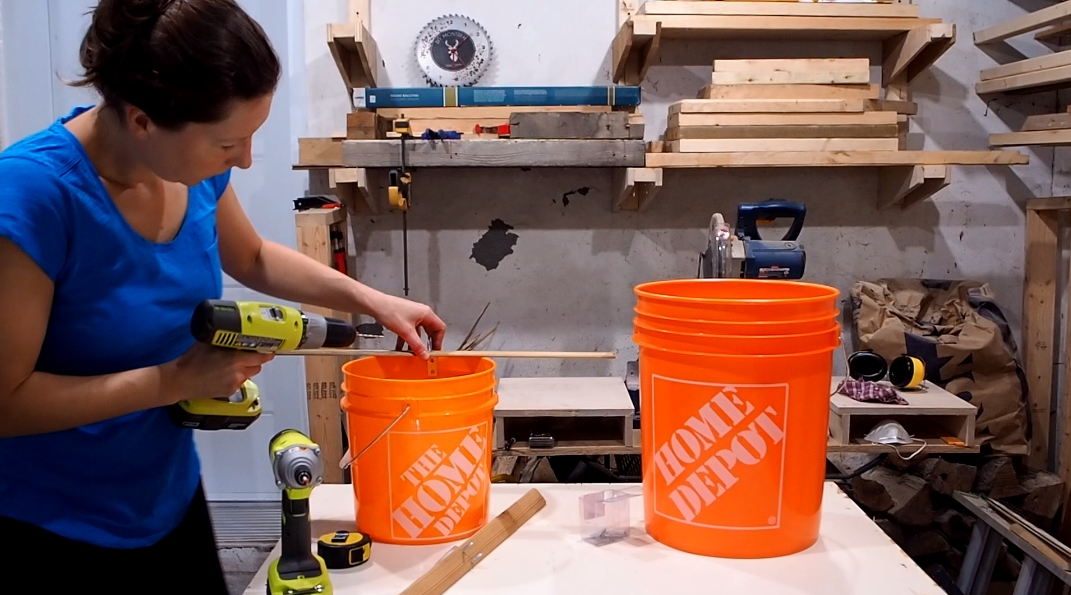
Revised: While I didn’t think to do this at the time, I recommend adding spacers (cut some small wood blocks) to your wood slats so the small bucket will sit dead center when placed into the larger bucket. I didn’t do this, so my planter walls ended up thicker on one side than the other.
Lubricate the Buckets
This is my first time working with concrete, but I’ve heard it’s a good idea to lubricate the forms so that it will be easier to take it apart once the concrete dries. I used canola cooking spray and added it liberally to the inside of the large bucket and outside of the small bucket.
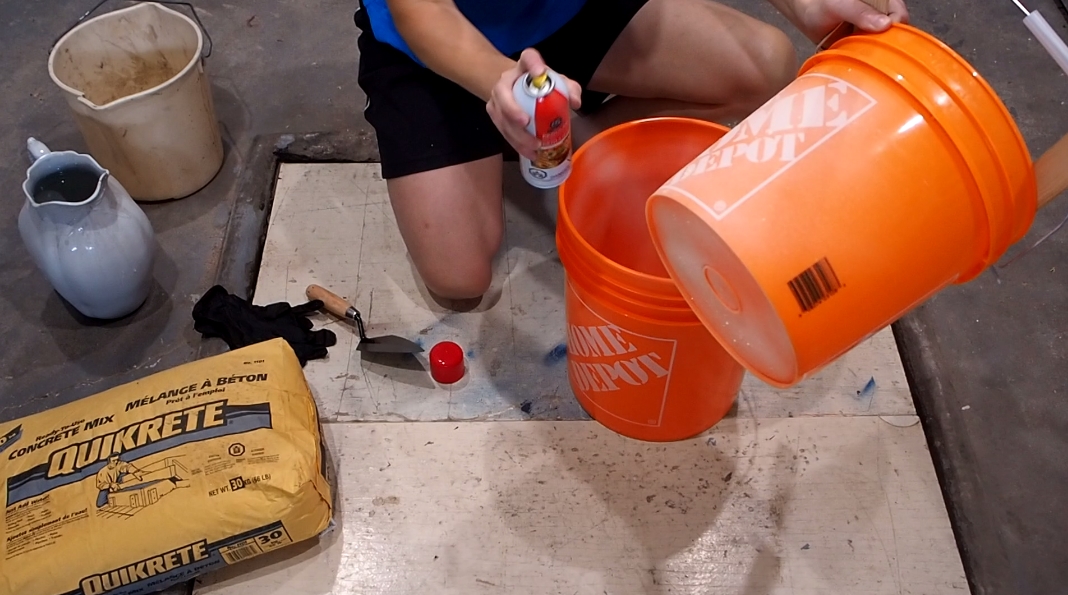
Mix the Concrete
There are so many types of concrete to choose from, it can be confusing! I decided to purchased the most basic (and cheapest) 30 Kg bag of concrete available, Quikrete concrete mix. I ended up using about 40 lbs.
Simply start with a small quantity of powder and gradually add water, mixing as you go. Stop adding water when your mix looks wet with clumps, sorta like oatmeal.
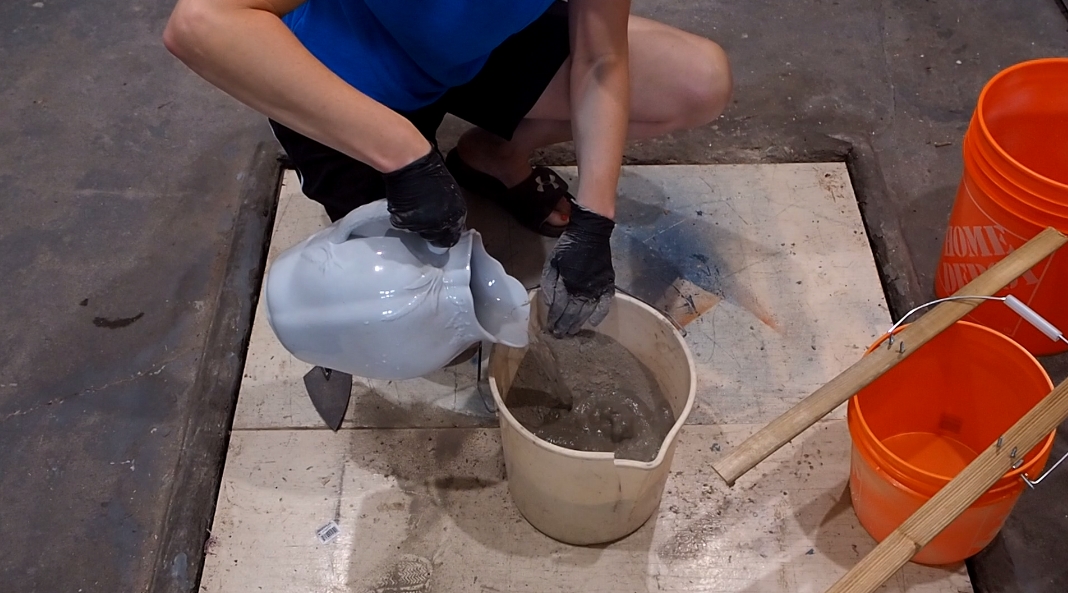
Tip: Wear a respirator or at least a dust mask so you don’t breath in the dust the inevitable airborne concrete dust.
Compact the Base
Start by building up the base of the planter by filling the bottom of the large bucket with a few inches of concrete. I used my hands (wearing nitrile gloves) to really push it into the corners and compact it. I also shook the bucket, tapped on the sides, and slammed it down on the ground a few times to help the air bubbles rise to the surface.
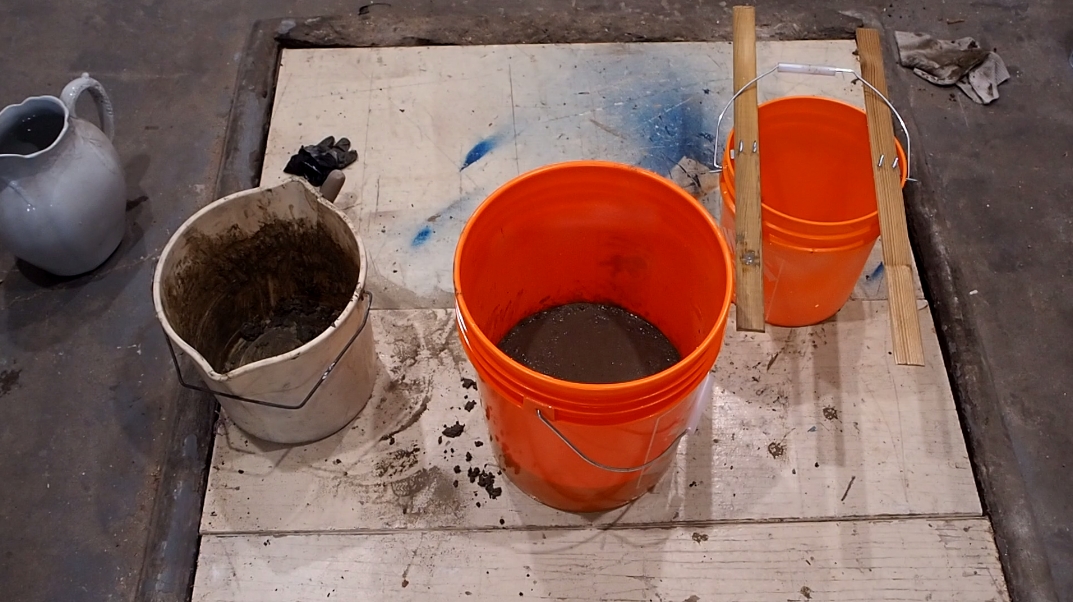
Keep building the base, testing as you go, until the bottom of the small bucket sits flush on top of the concrete base.
Build Up the Sides
After the base is formed, I started to build up the walls just a few inches high using my hands to place some concrete against the sides of the bucket.
Eventually I pushed the small bucket into place and started filling the sides bit by bit using my trowel.
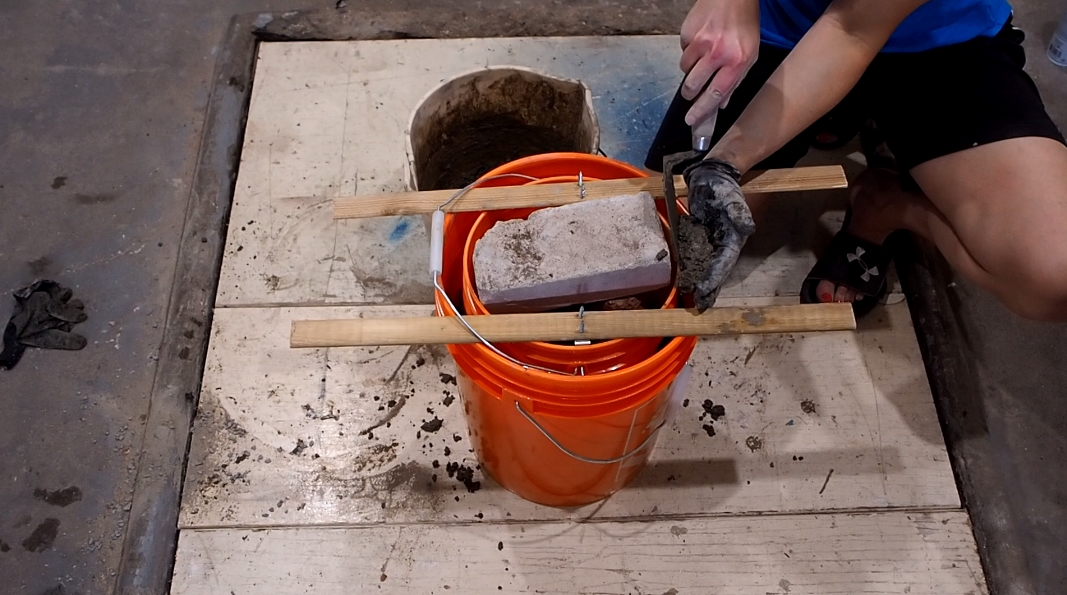
Once the cavity is full to the desired height (in my case right under the lip of the smaller bucket), again shake, tap, knock and rattle your bucket so the concrete compacts as much as possible and forces the air bubbles up to the surface.
Note: You will need to fill the small bucket with some weights to hold it down. You can use bricks, sand, rocks, etc.
Let It Cure
I used some sheathing tape to secure everything into place so it wouldn’t shift while drying. It’s also a good idea to cover the buckets with a plastic bag while it dries.
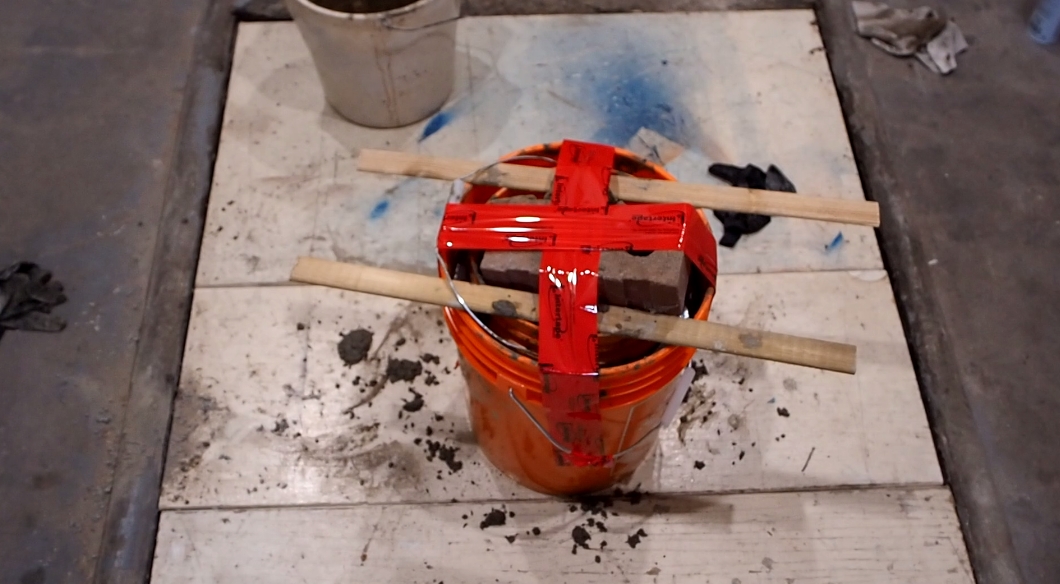
The Quikrete bag said the concrete takes 5 days to cure, but I figured since it’s only a flower pot, I could risk taking it out after 2 days. Turns out after 2 days it was still wet, so I waited another 2 days.
Remove the Forms
So it turns out the cooking oil trick did not work at all. The buckets were seriously stuck to the concrete, no matter how many times I tried to knock the concrete planter out. So in the end, I ended up cutting both buckets down the side with a utility knife in order to release the planter.
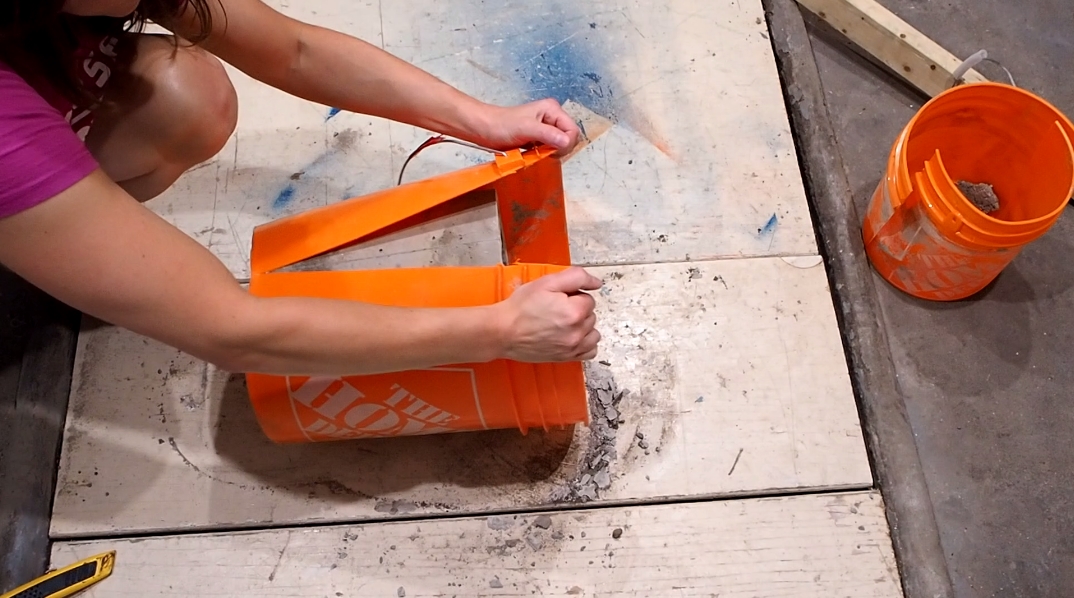
Final Result
I used an orbital sander with some sandpaper to polish the top of the planter’s lip. The final result looks awesome!
Now all that’s left is to plant something in my new concrete flower pot, and now that I look at it, I think it could use a plant stand… which is a great idea for my next post! You can see how I made this wood plant stand here.
If you haven’t already done so, watch the video How to Make a Large Concrete Planter
